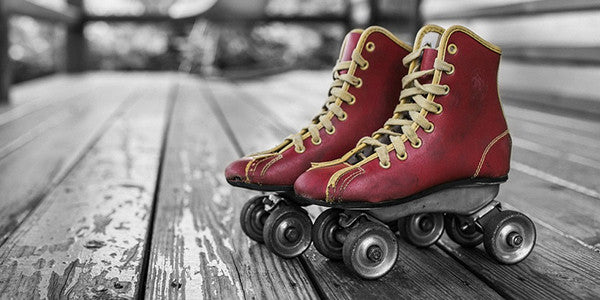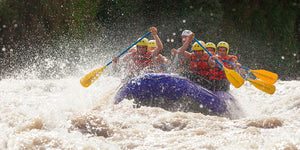- Home
- Shop709 Blog
- How To Roll: Part 1
How To Roll: Part 1

Reasons to Revisit a Favorite Childhood Pastime, Decades Later
As kids, many of us loved to roller skate. First skates were often the chunky, plastic strap-on types that fit over a kindergartner’s sized shoes. Those might be replaced with the traditional, lace up boot type to see you through grade school, perhaps followed by something a little snazzier in the teen years.
For many, high school graduation marks the end of what had been until then a lifelong love of skating. Things like work, college, marriage and kids all steal away more of your time and energy, and it's not long before roller skating becomes little more than a wistful blast of nostalgia as you drive your own kids to the rink, or select that first pair of strap-on toddler skates for them.
It doesn't have to be this way. Skating is every bit as fun in the adult years as it was when you were a kid, and while some extra safety precautions you probably never even thought about as a kid will now be very important, roller skating can be an excellent full-body workout option.
“Quad” skating (skating on the same type of four-wheeled skates you typically see at the roller rink) has made a comeback, particularly with adults looking for a fun way to exercise. Provided you’re healthy enough for aerobic exercise, wear the proper safety equipment, invest in some decent skates and take the time to warm up before you hit the rink or the pavement, roller skating is a terrific alternative to more traditional gym workouts. It’s easier on the joints than running, requires less rhythm and coordination than those Brazilian dance exercise classes, is a lot more fun than lifting weights, and costs less than a gym membership or exercise class enrollment: once you’ve got your skates, helmet and pads, all you need is a smooth surface to roll on.
Follow along with this series to learn all about how to get started as a late-in-life skater. Some of the topics we'll be covering include: how to choose your skates and safety gear, learning how to slow down, stop and safely fall (yes, it can be done without injuring yourself), taking those first few, unsteady rolls (and ensuring they're as safe as possible), and more.






Comments 0